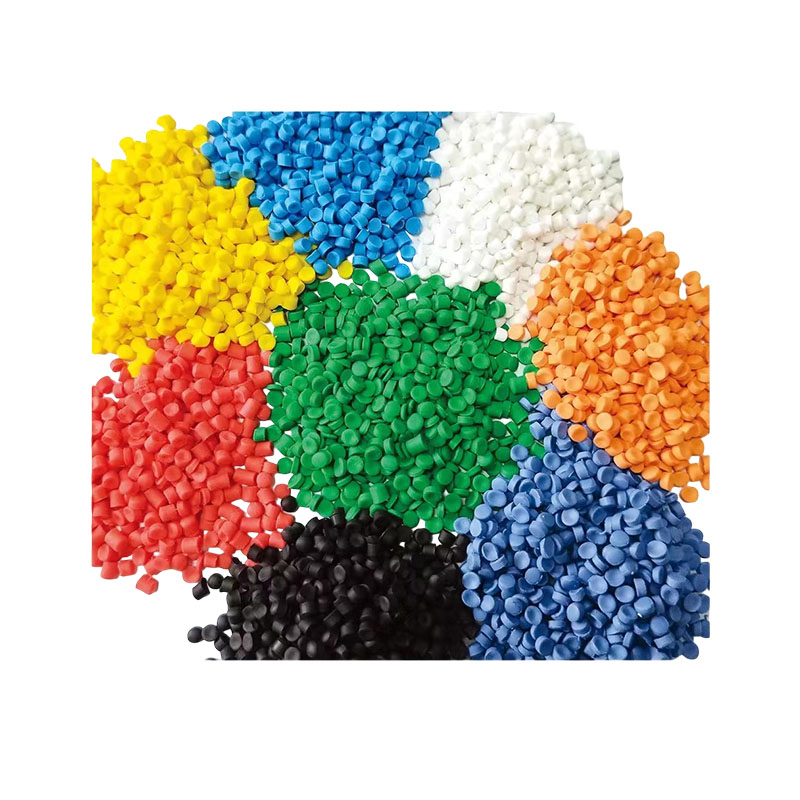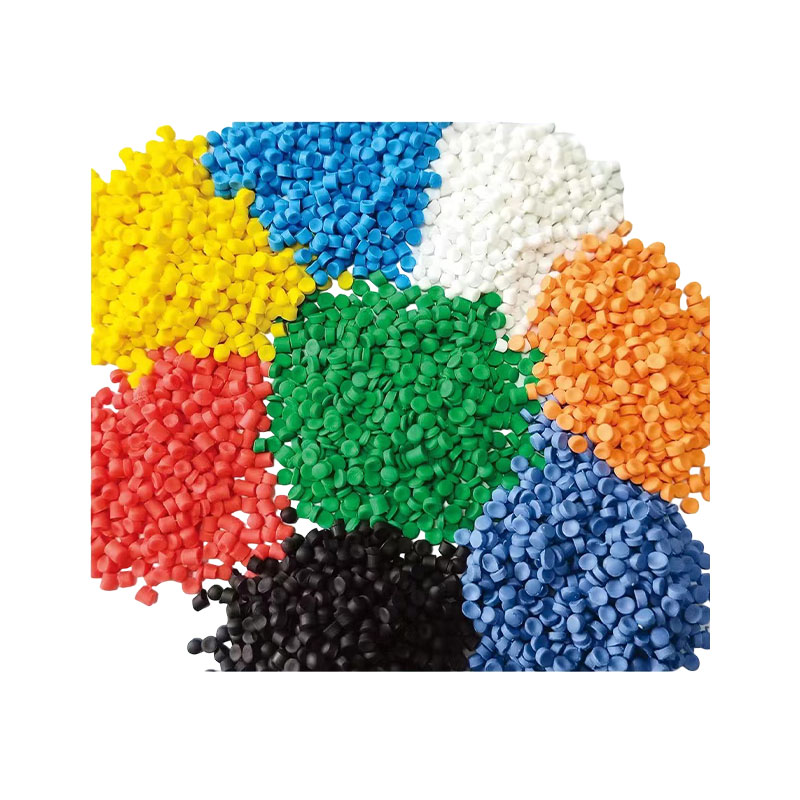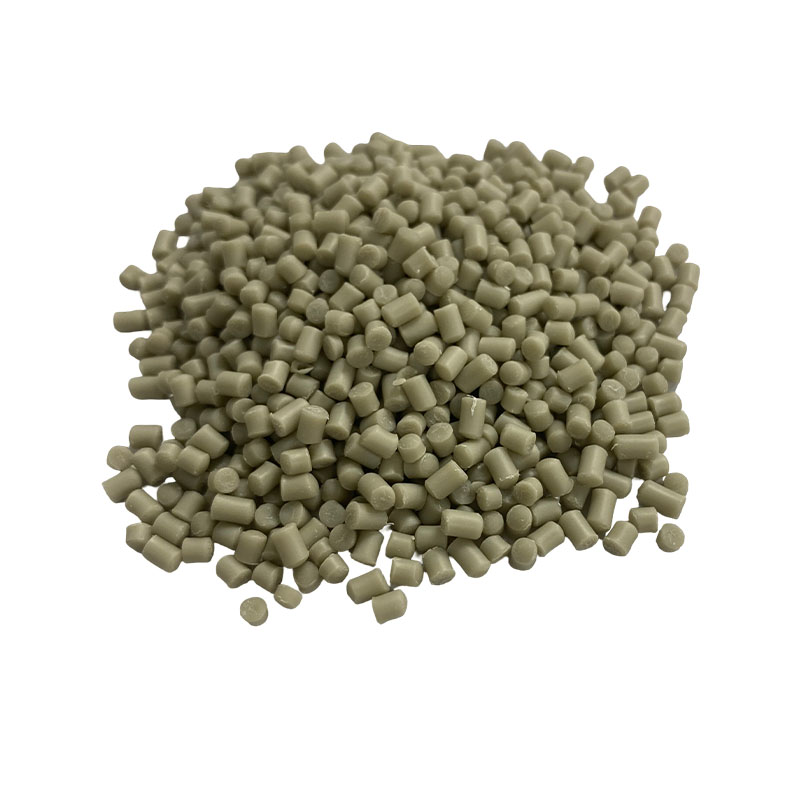Can vitrified polyolefin cable material effectively reduce power transmission loss?
Release Time : 2025-07-15
1. Causes and optimization directions of power transmission loss
In power transmission systems, energy loss mainly comes from conductor resistance, dielectric loss and energy dissipation caused by heat. Traditional cable materials are prone to problems such as thermal aging and electrical breakdown under high temperature, high voltage or high frequency operating environments, resulting in reduced transmission efficiency. Therefore, selecting a cable material with excellent electrical insulation performance, thermal stability and mechanical strength is an important means to reduce power transmission loss. Vitrified polyolefin cable material, as a new type of high-performance cable material, is gradually gaining attention.
2. Structural characteristics of vitrified polyolefin cable material
Vitrified polyolefin cable material is a composite material based on polyolefin, which is treated by special processes to form a ceramic-like structure at high temperatures. This material has the good flexibility and processing properties of polyolefin under normal conditions, and quickly "ceramizes" under fire or high temperature conditions to form a hard and dense protective layer with excellent fire resistance, heat insulation and insulation properties. This unique dual characteristic makes it both safe and efficient in power transmission.
3. Improve insulation performance and reduce dielectric loss
During power transmission, the insulation material of the cable will produce dielectric loss due to the electric field, especially in high voltage or high frequency environment. Vitrified polyolefin cable material has a lower dielectric constant and dielectric loss tangent value, which can reduce energy loss under the action of the electric field. In addition, its dense structure after ceramicization further improves the insulation performance and reduces the energy loss caused by local discharge or electrical breakdown.
4. Excellent thermal stability and reduced heat loss
The cable will generate heat during operation. If the material has poor thermal conductivity or insufficient heat resistance, it will cause local temperature to rise, which will lead to increased resistance and increased energy loss. Vitrified polyolefin cable material has good thermal stability and is not easy to soften or decompose at high temperature. The structure formed after ceramicization has a certain thermal conductivity, which helps to evenly dissipate heat, thereby reducing energy waste caused by local overheating.
5. Superior processing performance and guaranteed material uniformity
The vitrified polyolefin cable material adopts the processing technology of internal mixer mixing and compression and twin-screw extruder plasticizing and extrusion to ensure the high uniformity of material components. This uniform microstructure helps reduce the interface resistance between the conductor and the insulation layer, and improves the overall conductivity of the cable. At the same time, the stable material properties also reduce the local loss problem caused by processing defects.
6. After ceramicization, a dense structure is formed to improve fire safety
In extreme environments such as fire, vitrified polyolefin cable material can quickly form a hard and dense shell, which not only effectively isolates flames and high temperatures, but also maintains the structural integrity of the cable. This feature not only improves the fire resistance level of the cable, but also indirectly improves the stability of power transmission. Maintaining power supply capacity during a fire is crucial for key facilities such as emergency systems and firefighting equipment.
7. Energy-saving advantages in practical applications
At present, vitrified polyolefin cable material has been widely used in high-rise buildings, subways, tunnels, data centers and other places with high requirements for fire resistance. In these environments, cables not only need to withstand long-term high-load operation, but also have good energy-saving performance. Actual operation data shows that cables using this material show lower temperature rise and less energy loss in long-term operation, significantly improving the overall efficiency of the power system.
8. Advantages compared with traditional materials
Compared with traditional low-smoke halogen-free flame-retardant cable materials, vitrified polyolefin cable material not only has better fire resistance, but also has lower dielectric loss and better thermal conductivity. Compared with ceramic silicone rubber materials, it has more advantages in processing performance and cost control. This comprehensive performance improvement makes vitrified polyolefin cable material have irreplaceable advantages in the pursuit of high efficiency, safety and environmental protection in modern power systems.
With the optimization of energy structure and the continuous improvement of power system's energy-saving requirements, vitrified polyolefin cable material will play an increasingly important role in the future power transmission field. The future development direction will focus on further improving the material's high temperature resistance, reducing production costs, and improving environmental protection.
In power transmission systems, energy loss mainly comes from conductor resistance, dielectric loss and energy dissipation caused by heat. Traditional cable materials are prone to problems such as thermal aging and electrical breakdown under high temperature, high voltage or high frequency operating environments, resulting in reduced transmission efficiency. Therefore, selecting a cable material with excellent electrical insulation performance, thermal stability and mechanical strength is an important means to reduce power transmission loss. Vitrified polyolefin cable material, as a new type of high-performance cable material, is gradually gaining attention.
2. Structural characteristics of vitrified polyolefin cable material
Vitrified polyolefin cable material is a composite material based on polyolefin, which is treated by special processes to form a ceramic-like structure at high temperatures. This material has the good flexibility and processing properties of polyolefin under normal conditions, and quickly "ceramizes" under fire or high temperature conditions to form a hard and dense protective layer with excellent fire resistance, heat insulation and insulation properties. This unique dual characteristic makes it both safe and efficient in power transmission.
3. Improve insulation performance and reduce dielectric loss
During power transmission, the insulation material of the cable will produce dielectric loss due to the electric field, especially in high voltage or high frequency environment. Vitrified polyolefin cable material has a lower dielectric constant and dielectric loss tangent value, which can reduce energy loss under the action of the electric field. In addition, its dense structure after ceramicization further improves the insulation performance and reduces the energy loss caused by local discharge or electrical breakdown.
4. Excellent thermal stability and reduced heat loss
The cable will generate heat during operation. If the material has poor thermal conductivity or insufficient heat resistance, it will cause local temperature to rise, which will lead to increased resistance and increased energy loss. Vitrified polyolefin cable material has good thermal stability and is not easy to soften or decompose at high temperature. The structure formed after ceramicization has a certain thermal conductivity, which helps to evenly dissipate heat, thereby reducing energy waste caused by local overheating.
5. Superior processing performance and guaranteed material uniformity
The vitrified polyolefin cable material adopts the processing technology of internal mixer mixing and compression and twin-screw extruder plasticizing and extrusion to ensure the high uniformity of material components. This uniform microstructure helps reduce the interface resistance between the conductor and the insulation layer, and improves the overall conductivity of the cable. At the same time, the stable material properties also reduce the local loss problem caused by processing defects.
6. After ceramicization, a dense structure is formed to improve fire safety
In extreme environments such as fire, vitrified polyolefin cable material can quickly form a hard and dense shell, which not only effectively isolates flames and high temperatures, but also maintains the structural integrity of the cable. This feature not only improves the fire resistance level of the cable, but also indirectly improves the stability of power transmission. Maintaining power supply capacity during a fire is crucial for key facilities such as emergency systems and firefighting equipment.
7. Energy-saving advantages in practical applications
At present, vitrified polyolefin cable material has been widely used in high-rise buildings, subways, tunnels, data centers and other places with high requirements for fire resistance. In these environments, cables not only need to withstand long-term high-load operation, but also have good energy-saving performance. Actual operation data shows that cables using this material show lower temperature rise and less energy loss in long-term operation, significantly improving the overall efficiency of the power system.
8. Advantages compared with traditional materials
Compared with traditional low-smoke halogen-free flame-retardant cable materials, vitrified polyolefin cable material not only has better fire resistance, but also has lower dielectric loss and better thermal conductivity. Compared with ceramic silicone rubber materials, it has more advantages in processing performance and cost control. This comprehensive performance improvement makes vitrified polyolefin cable material have irreplaceable advantages in the pursuit of high efficiency, safety and environmental protection in modern power systems.
With the optimization of energy structure and the continuous improvement of power system's energy-saving requirements, vitrified polyolefin cable material will play an increasingly important role in the future power transmission field. The future development direction will focus on further improving the material's high temperature resistance, reducing production costs, and improving environmental protection.







